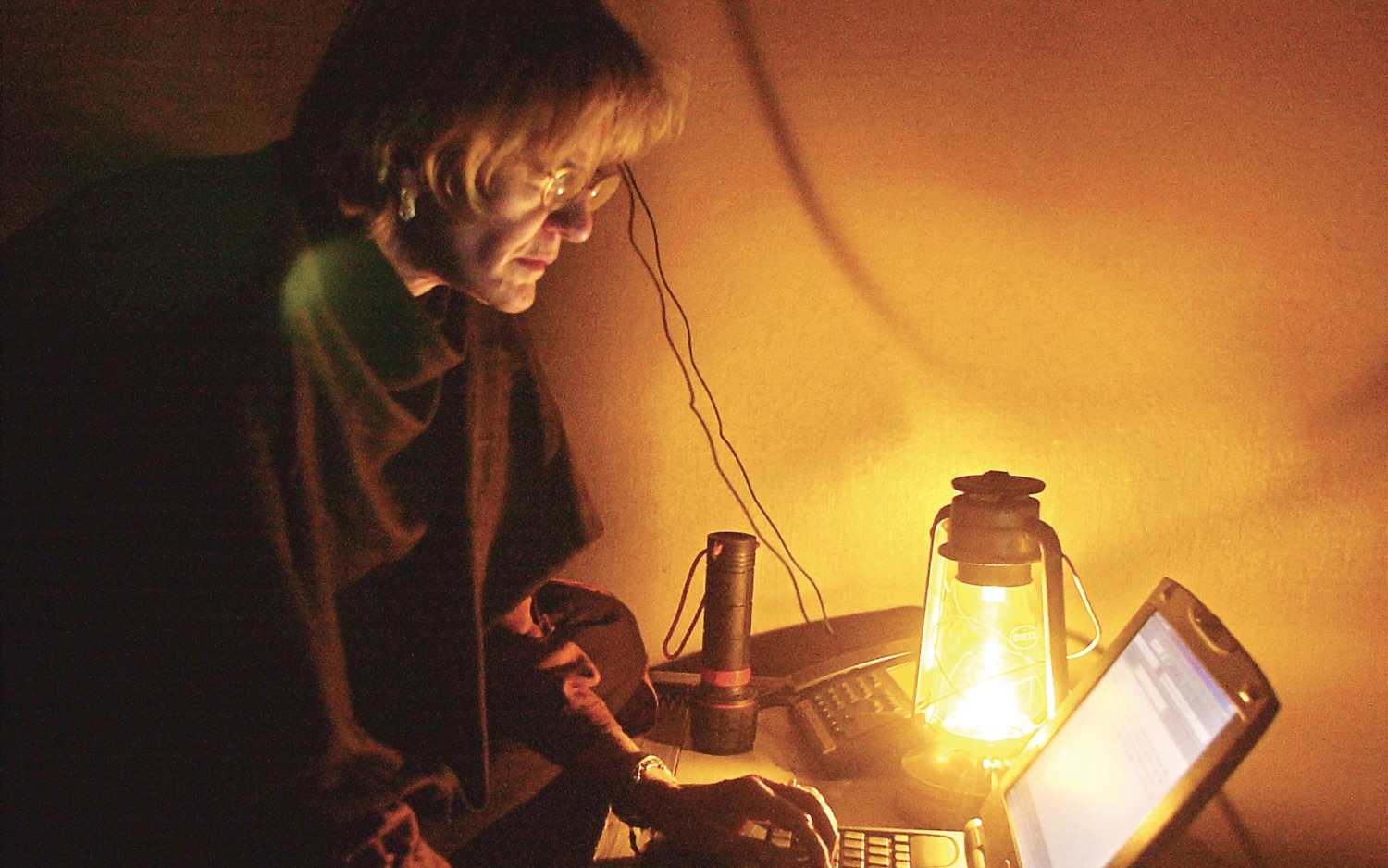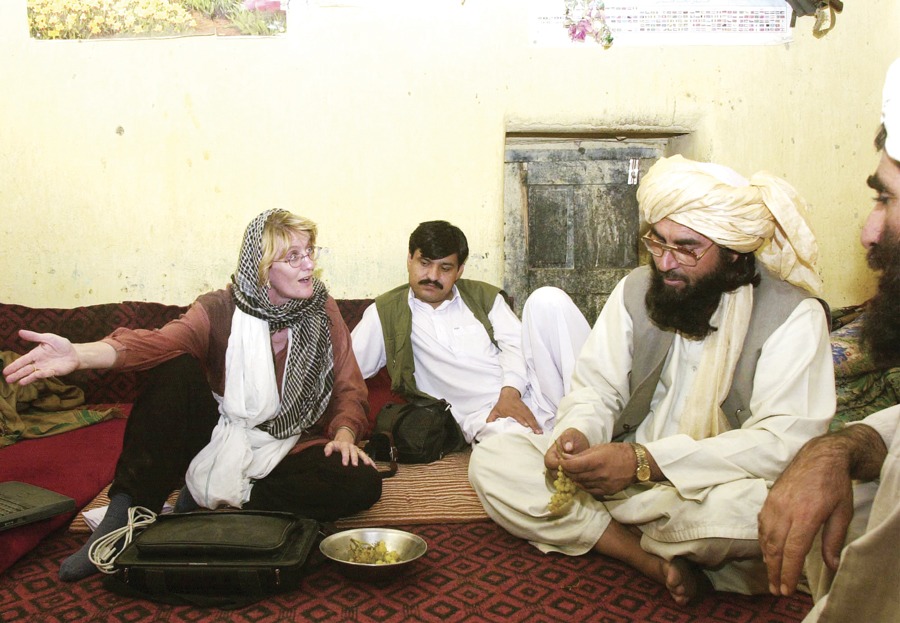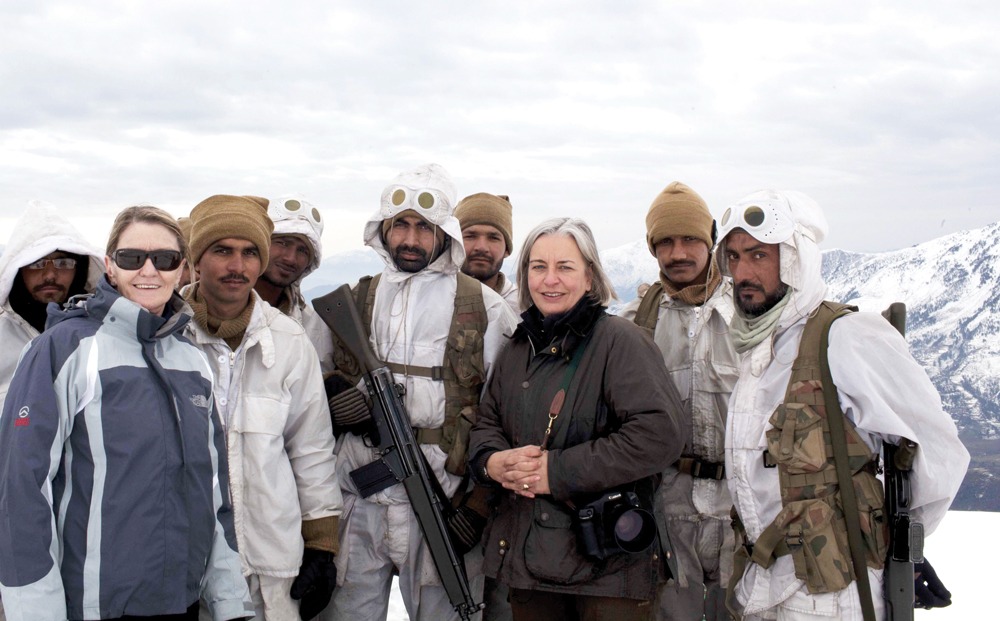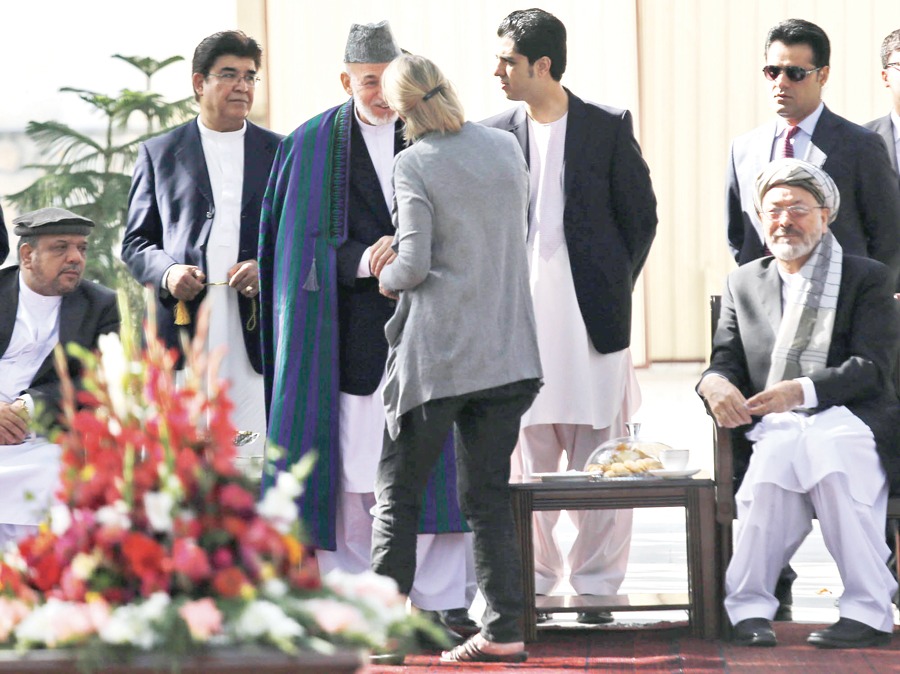Kabul, Capital of Afghanistan’s Tragic Symmetry

Kathy Gannon
My relationship with Kabul evolved over more than three decades when Afghanistan was my regular work commute from my home, first in Peshawar and then in Islamabad, nearly 500 kilometres to the east. As correspondent and then news director for the Associated Press in Pakistan and Afghanistan, I watched Kabul change, grow and accommodate the cultural, political and social pendulum swings from regime to regime as its people adapted to a succession of new realities, often imposed from outside, with little to no understanding of Afghans or Afghanistan.
The Kabul of 2021 following the Taliban’s return had a surreal feel about it. I had been in Kabul often when the Taliban last ruled Afghanistan between 1996 and 2001. And in August, 2021, as I sat in a government office once again occupied by Taliban officials — most of them wearing the traditional turban and all wearing the bushy beard — I was struck by the tragic symmetry of Afghanistan’s history, one closely linked to mine.
The Kabul of 2021 bore only a passing resemblance to the sleepy city the Taliban had fled two decades earlier. Back then, barely a few hundred thousand people lived in the Afghan capital and the traffic was mostly bicycles and beat-up, old yellow taxis. Vast swaths of the city were in ruins, destroyed by warring mujahedeen groups, who had turned their guns on each other after taking power from the Moscow-backed communist government in 1992. They were ousted by the Taliban in 1996.

Back then, there were no traffic lights. Deh Mazang circle was in shambles, its buildings reduced to piles of rubble; the grand Darul Aman Palace was pockmarked by mujahedeen rocket holes, its magnificent dome ravaged and ruined, and the Kabul Zoo was a series of tumble-down enclosures, most of the animals shot and killed by warring mujahedeen groups. There were no high-rise buildings to speak of and most of the government office buildings, with the exception of the brick foreign ministry building, were badly damaged and only a few of the government offices had unbroken windows.
Kabul’s western Afshar neighborhood was a graveyard. Fighters loyal to mujahedeen leader Abdul Rasul Sayyaf, had killed hundreds of Hazaras there. History tells us it was Sayyaf who had arranged for Osama bin Laden to be brought to Afghanistan from Sudan in May 1996. True to Afghanistan’s tragic symmetry, Sayyaf would be among the mujahedeen-cum-warlords embraced by the US-led coalition in 2001.
By August 2021, much had transpired in the two decades following the coalition takeover. I wondered at what the Taliban might be thinking that day. Many seemed to be just hanging about, taking in the surroundings. Had they always imagined themselves back in the Afghan capital or had they seen their war to reclaim it as a never-ending one? As I scanned the faces of those Taliban who wandered the ministry buildings, many looked like they were barely out of their teens. I realized most were probably too young to remember the first time the Taliban ruled.
Back then, the Taliban had thrown out the mujahedeen, or freedom fighters, as US. President Ronald Reagan had anointed them during their 1980s American-backed battle against the invading Soviet Union. When the Soviets withdrew in 1989, many thought we were witnessing the last battle of a dying Cold War — after all, within just months the Berlin Wall came crashing down. Yet, as I write this, a new Cold War is brewing and I can’t help but think that, like Afghanistan, our world, too, has its own tragic symmetry.
This latest chapter of Afghanistan’s fraught history really does begin in 1992, when the mujahedeen took power from the Moscow-backed government of President Najibullah. A collection of eight mujahedeen groups made up Afghanistan’s new government. Each group took a different ministry, but they soon turned their guns on each other in brutal battles for more power. Kabul was reduced to a series of frontlines manned by fighters belonging to the various mujahedeen groups. Moving among the many frontlines was a treacherous gambit and one I made often with my AP colleague Amir Shah, who would weave his old Toyota Corolla at breakneck speeds from one neighborhood to another.

In their four years in power, which came to an end when the Taliban drove them out, the fractured regime leaders had regressed from mujahedeen to warlords. In their wake, they left Kabul in ruins, with as many as 50,000 civilians dead and a war-battered country further ravaged by their runaway corruption.
In a testament to Afghanistan’s tragic symmetry, they were returned to power five years later, in 2001, with the help of the US.-led coalition that drove the Taliban from Kabul.
This time, they would rule for 20 years. But as if fate, too, was hostage to the same symmetry, their unbridled corruption, revenge killings and relentless feuding would once again contribute to their fall from power and to the Taliban’s return.
As my own fate, and career choices, would have it, I’ve accompanied Afghanistan on its tragic journey. Like so many Afghans, I too suffered from the violence that has haunted this extraordinary country of amazing people. In 2014, a day before the national elections, an Afghan police commander unloaded his AK 47 into me and my colleague and close friend AP Photographer Anja Niedringhaus. We were in Khost, in eastern Afghanistan. I was hit with seven bullets and Anja as many. Two were fatal and Anja died immediately. I survived, with life-changing injuries.
For me the kind, reassuring words of the Afghan doctor who saved my life at the small hospital in Khost reflects the soul of the Afghan nation. As he wheeled me into the operating room he whispered: “Please know your life is as important to me as it is to you.”
As a journalist, when the Soviet Red Army ended its 10-year invasion on Feb. 15, 1989, I was in Afghanistan having walked through rugged mountain passes to reach the outskirts of Kabul. When the Taliban rumbled into Kabul that morning of Sept. 27, 1996, ending the brutal mujahedeen war, I was there. I recall interviewing Dr. Abdullah Abdullah, who was spokesman for mujahedeen leader Ahmed Shah Masood (later killed, two days before 9/11, in a local Al Qaeda suicide bombing), just hours before they fled Kabul. He vowed they would fight the Taliban until their “last drop of blood.” It should be noted President Ashraf Ghani made a similar vow just days before fleeing Kabul in August 2021.
When the US.-led coalition marched into Kabul on Nov. 13, 2001, I had arrived in the Afghan capital three weeks earlier, the only western journalist to return to Taliban-controlled Afghanistan during the coalition’s assault on the country.
Twenty years later, on Aug. 31, 2021, when the last US aircraft took off from Kabul’s Hamid Karzai International Airport, ending America’s longest war, I was again in Kabul. I was awakened that night by celebratory gunfire of the victorious Taliban, who had returned to the city two weeks earlier.

The Kabul of 2021 was light years ahead of the city the Taliban fled two decades earlier. For the thousands of younger Taliban, Kabul mesmerized them. Some of the younger ones, many of whom came from Afghanistan’s rugged countryside, likened Kabul to a dream. Looming glass high-rise office buildings flanked the wide paved roads. There were shopping malls and neon-lit stores, multi-storied apartment buildings and wedding halls, with a bling and glamour to rival Las Vegas. One even had a brightly lit Eiffel Tower as decoration. The traffic was a snarl of flashy new four-wheel drive vehicles and late-model cars. Inside the government ministries, the furniture was plush. Some of the young Taliban interviewed quietly, away from their commanders, dreamed of staying in the capital, hoping they would not be returned to the countryside.
It’s now nearly two years since the Taliban arrived in Kabul. They are leaving their mark. There is security in Afghanistan that wasn’t there before and travel to most places in the country is possible, in some areas for the first time in two decades. But the worst of their imprint has been the relentlessness with which the leadership has sought to restrict women to their homes, denying them education and the right to work.
And with each new edict, another dream dies.
I was in Kabul again in March 2022 when girls’ schools were to re-open. The Taliban’s education ministry had spent weeks preparing. Teachers were sent back to the classroom. To avoid confrontation with the unwilling in Afghanistan’s most rural and conservative regions, the ministry left it to the local elders to decide whether a girls’ school would re-open in their area. The Taliban leader’s eleventh-hour decision to renege on that promise to let girls return to school was met with outrage by the international community, but it was also met with surprise and disappointment by the Taliban’s own education ministry. The Taliban were not the monolith of global perception. In Taliban offices and among the rank-and-file, there was no evident support for the education ban. They scrambled to find excuses, promised the future would see girls in schools.
I think some of them even believed it.
Said one official caught off-guard and visibly disappointed at the decision: “It won’t be forever.”
Sadly, for Afghanistan’s girls and women, it certainly feels that way.
Kathy Gannon was a Fall ’22 Joan Shorenstein Fellow at the Shorenstein Center at Harvard’s Kennedy School. She covered Pakistan and Afghanistan for The Associated Press for 34 years, until May, 2022. She authored the book I is for Infidel. Her website is www.Kathy-Gannon.com
